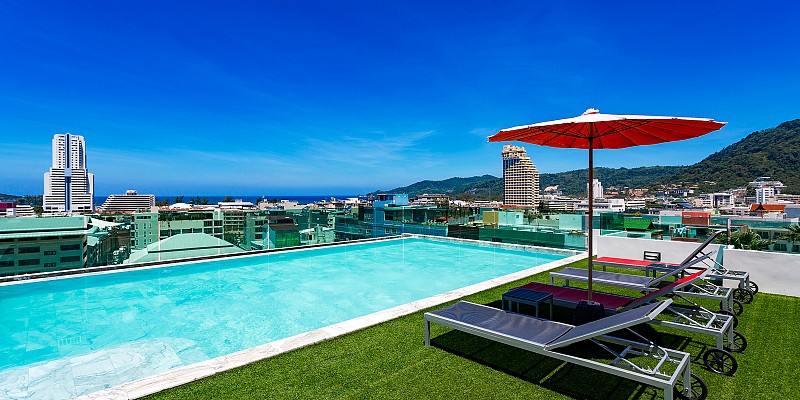tulsi baug market pune
Description
Tulsi Baug Market Pune — The Living Heart of the City’s Shopping Tradition
Tulsi Baug Market in Pune is not merely a shopping destination; it is a sensory journey through time. Nestled in the old city’s Budhwar Peth, this bustling bazaar represents the soul of Pune — vibrant, layered, and endlessly fascinating.
For more than two centuries, Tulsi Baug has been the place where history, faith, and trade converge. Every lane tells a story, every sound carries the rhythm of tradition, and every purchase feels like a small piece of Pune’s living heritage.
The Roots of Tulsi Baug: Where Faith Birthed Commerce
The origins of Tulsi Baug go back to the 18th century, when the Peshwas ruled Pune. The area was once part of a serene garden belonging to the Peshwa family — hence the name “Tulsi Baug,” meaning “Basil Garden.” In time, the Tulsi Baug Temple complex emerged at its center, dedicated to Lord Ram, Lord Ganapati, and Lord Shankar.
The towering 130-foot spire of the Ram Mandir still dominates the skyline, its intricate woodwork standing as a reminder of the city’s artistic legacy.
Around this temple, a modest market grew that initially served devotees buying flowers, offerings, and household items. Over the years, the trickle of shops turned into a flood of trade, transforming Tulsi Baug into one of Maharashtra’s most dynamic marketplaces. What began as a place for religious needs became the city’s everyday bazaar — a living museum of traditional commerce.
A Sensory Experience: What Visiting Tulsi Baug Pune Feels Like
Walking into Tulsi Baug is like stepping into a sensory symphony. The soundscape is a lively mix of shopkeepers calling out deals, the clatter of bangles, and the occasional temple bell ringing in the background. Narrow lanes burst with color — sarees in vivid hues, gleaming brassware, and garlands of marigolds and jasmine.
The air carries a blend of aromas — incense from the temple, spices from the food stalls, and the irresistible scent of fresh puran poli sizzling on a tawa. The dense crowd moves in waves, yet there’s a rhythm to the chaos. Locals navigate it effortlessly, while first-time visitors often stop mid-lane, mesmerized by the energy.
What to Buy?: A Lane for Every Need
Tulsi Baug’s magic lies in its diversity. Every alley specializes in a particular category, giving the market its signature organized disorder.
1. Jewellery and Accessories
From traditional Maharashtrian naths and thushis to modern oxidized earrings, the jewelry section sparkles with variety. Brass and silver-plated ornaments mimic real gold pieces at a fraction of the price. The market’s imitation jewelry is so well-crafted that it has become a go-to destination for brides and festive shoppers alike.
2. Ethnic and Casual Wear
Cotton kurtis, silk sarees, and elegant dupattas fill entire stretches of the market. The famous Nauvari sarees and Paithani silks reflect Pune’s regional pride. Tailors nearby offer quick alterations, ensuring you leave with a perfect fit. College students also frequent the newer stores that stock affordable Western outfits and trendy accessories.
3. Footwear and Bags
From classic Kolhapuri chappals to colorful flats and embroidered juttis, footwear options line the narrow corridors. Bags and clutches for weddings, casual totes, and utility backpacks are easy to find. Sellers encourage bargaining, and buying multiple items often brings better deals.
4. Kitchenware and Household Goods
Steel dabbas, copper vessels, and aluminum cookware dominate the household goods section. For generations, newly married couples and homemakers have turned to Tulsi Baug for their kitchen setup. The market also offers cleaning tools, plastic containers, and home organizers — practical and inexpensive.
5. Religious and Festive Supplies
This section is a world of devotion and celebration. Brass puja thalis, diyas, idols, incense, and garlands fill the shops. During festivals like Diwali and Ganeshotsav, the entire area transforms into a colorful fairground, with decorative lights, rangoli powders, and festive ornaments.
6. Souvenirs and Miscellaneous Finds
Tourists love the small trinkets — keychains, fridge magnets, and local crafts. These make charming reminders of the visit and reflect Pune’s cultural soul.
The Art of Bargaining
Shopping in Tulsi Baug is incomplete without bargaining. Vendors expect it; it’s part of the tradition. Start by quoting about 40–60% below the initial price, depending on the product. Be polite yet firm — a smile and a friendly tone go a long way. Comparing prices across a few shops helps, as similar items are often sold side by side. Most shops accept cash and UPI, though smaller stalls prefer exact change.
Best Time to Visit and How to Reach
Tulsi Baug operates roughly from 9 AM to 11 PM, with individual shop timings varying. Weekday mornings are the calmest time to explore, while evenings are livelier and more atmospheric. Festival weeks, particularly around Diwali, Gudi Padwa, and Ganesh Chaturthi, see the market at its most crowded and colorful.
Located in Budhwar Peth, Tulsi Baug is easily accessible. The market lies between Laxmi Road and Bajirao Road — major arteries of old Pune. Public buses and auto-rickshaws are convenient, and nearby metro stations like PMC or Kasba Peth connect visitors from across the city. Due to narrow lanes and limited parking, it’s best to leave your car outside the old city and walk in.
Food: Refueling the Shopper’s Spirit
A visit to Tulsi Baug isn’t just about shopping; it’s a gastronomic experience. Street stalls serve Pune’s beloved snacks — misal pav, vada pav, bhel, sabudana khichdi, and sugarcane juice. Legendary eateries like Sri Krishna Bhuvan and Bedekar Tea Stall are a short walk away.
For dessert, Kavre Ice Cream offers a nostalgic end to a busy day. The mix of spice, sweetness, and chatter makes these food breaks a part of the market’s rhythm.
Festival Fever: When Tulsi Baug Shines Brightest?
Festivals transform Tulsi Baug into a living carnival. During Diwali, the market glows with rows of diyas, colorful kandils, and decorative lights. Ganeshotsav brings an explosion of idols, puja plates, and eco-friendly accessories. Wedding season fills the air with excitement as brides-to-be browse for trousseaus, sarees, and jewelry sets. Every festival season has its own visual and emotional signature, drawing locals and tourists alike.
Navigating the Maze: A Smart Route Plan
Efficient navigation enhances the experience. Start from the Laxmi Road entrance and move through the jewelry and pooja lanes first. Next, explore sarees and fabrics, pausing for tailoring if needed. Then circle back for utensils, organizers, and footwear. Conclude with smaller accessories before grabbing a snack. Two to four hours is ideal for a complete round.
If short on time, focus on one of three quick loops:
- Essentials Loop: Pooja items, utensils, and cosmetics.
- Festive Loop: Decorations, jewelry, and fabrics.
- Bridal Loop: Sarees, trousseau sets, and imitation ornaments.
Comfort, Safety, and Sustainability
Wear light, breathable clothes and comfortable footwear — you’ll walk a lot. Keep belongings secure and use small bags or crossbody purses. Crowds are dense but generally friendly. Vendors appreciate politeness and patience.
For a sustainable visit, bring a reusable tote and water bottle. Opt for clay diyas and steel utensils over plastic. Supporting eco-friendly stalls not only helps the environment but also preserves traditional crafts.
Photography and Memories
Photographers find Tulsi Baug irresistible. Morning light enhances colors and textures, from stacked bangles to garland stalls. Always seek permission before photographing inside shops. The best shots capture candid moments — a vendor arranging wares, a customer testing earrings, or a child admiring colorful toys.
Beyond Tulsi Baug: Exploring Pune’s Heritage Core
After shopping, extend your trip into a cultural walk. Nearby, you’ll find:
- Vishrambaug Wada — a Peshwa-era mansion known for its intricate balconies.
- Dagdusheth Halwai Ganpati Temple — Pune’s iconic spiritual landmark.
- Mahatma Phule Mandai — the city’s grand Victorian-style vegetable market.
- Shaniwar Wada — the historic seat of the Peshwas.
Each site adds depth to your Tulsi Baug visit, connecting commerce with culture and spirituality.
The Human Heart of the Market
Tulsi Baug thrives because of its people — generations of shopkeepers who have turned trade into tradition. Many have inherited their shops from parents and grandparents, maintaining relationships with customers that span decades. They remember faces, preferences, and even bargaining styles. It’s a level of personal connection no modern mall replicates.
The market’s crowd reflects Pune’s diversity. Students, homemakers, office workers, and visitors from across Maharashtra share the same narrow lanes, bound by a love for authenticity and value.
Why Tulsi Baug Pune Endures?
In an age of online shopping and glossy malls, Tulsi Baug Market Pune endures because it offers something priceless — an experience rooted in human connection. The market embodies the city’s resilience and adaptability. While digital payments and QR codes have entered its landscape, the essence remains unchanged — personal interaction, trust, and tangible discovery.
Tulsi Baug Market Pune isn’t just where Pune shops; it’s where Pune breathes. To walk through its lanes is to witness a living chapter of the city’s story—a blend of commerce, culture, and community that has endured for centuries without losing its charm.





















